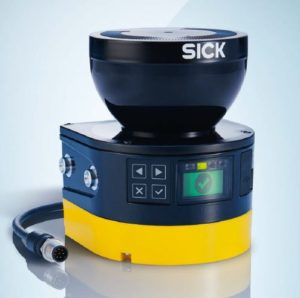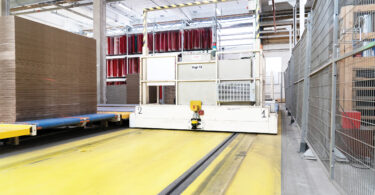 Safety laser scanning is often used for area guarding in the metalworking industry, including welding applications or laser, plasma, and oxy fuel cutting applications.
Safety laser scanning is often used for area guarding in the metalworking industry, including welding applications or laser, plasma, and oxy fuel cutting applications.
However, many traditional safety laser scanners are at risk of false trips because they can be easily blinded by the ambient light from weld sparks and other nuisances like falling slag found in cutting applications. Frequent trips and unnecessary stops can mean more machine downtime and lost productivity.
So how can you safeguard a robotic weld cell or cutting machine while still maintaining productivity and optimizing machine availability? That’s where safeHDDM™ technology can help effectively filter out most nuisances common to metalworking applications.
Below are answers to 3 important questions you may have about this new technology.
How is safeHDDM different from traditional scanning technology?
Using time-of-flight (TOF), a traditional safety laser scanner emits a single pulse of light at a time, which is then reflected by a target, if present. The time required for the pulse to travel between the scanner and the target and back again is proportional to the distance. This allows the scanner to detect objects within the defined safeguarding area.
A laser scanner with safeHDDM technology also operates on the TOF principle, but instead of a single pulse, the laser scanner emits multiple pulses for each degree of increment. As a result, safeHDDM generates approximately 80,000 individual pulses in each scan revolution – compared to the approximately 500 generated with conventional technology.
Then, the digitized echoes are compiled into data packages which overlap during evaluation. This guarantees a significantly more stable time and distance measurement.
What are the benefits of multi-pulse laser scanning technology?
Depending on the existing solution, safeHDDM technology is 4- to 8-times more resistant to ambient light compared to other scanners.
Safety laser scanners with this new technology can withstand up to 40,000 lux, which means that they are practically immune to dazzle – whether from bright sunlight; high-frequency, artificial ambient lighting; or reflections shining directly into the optics.
In addition, because the scanner receives multiple data points for each position, it can use the averages of these data points to filter outliers. This greatly reduces the possibility that the scanner will be tripped by nuisances like slag.
Overall, safeHDDM laser scanning technology can offer:
- Greater reliability and fewer false trips
- Improved productivity and reduced downtime
- Saved costs and time
- Improved quality in welding applications, which reduces wasted material
 How can I learn more?
How can I learn more?
Check out our new microScan3 safety laser scanner that features safeHDDM technology.
And, as always, remember that it is crucial to conduct a risk assessment before implementing a safety solution. Contact a safety professional to discuss your specific application requirements.





